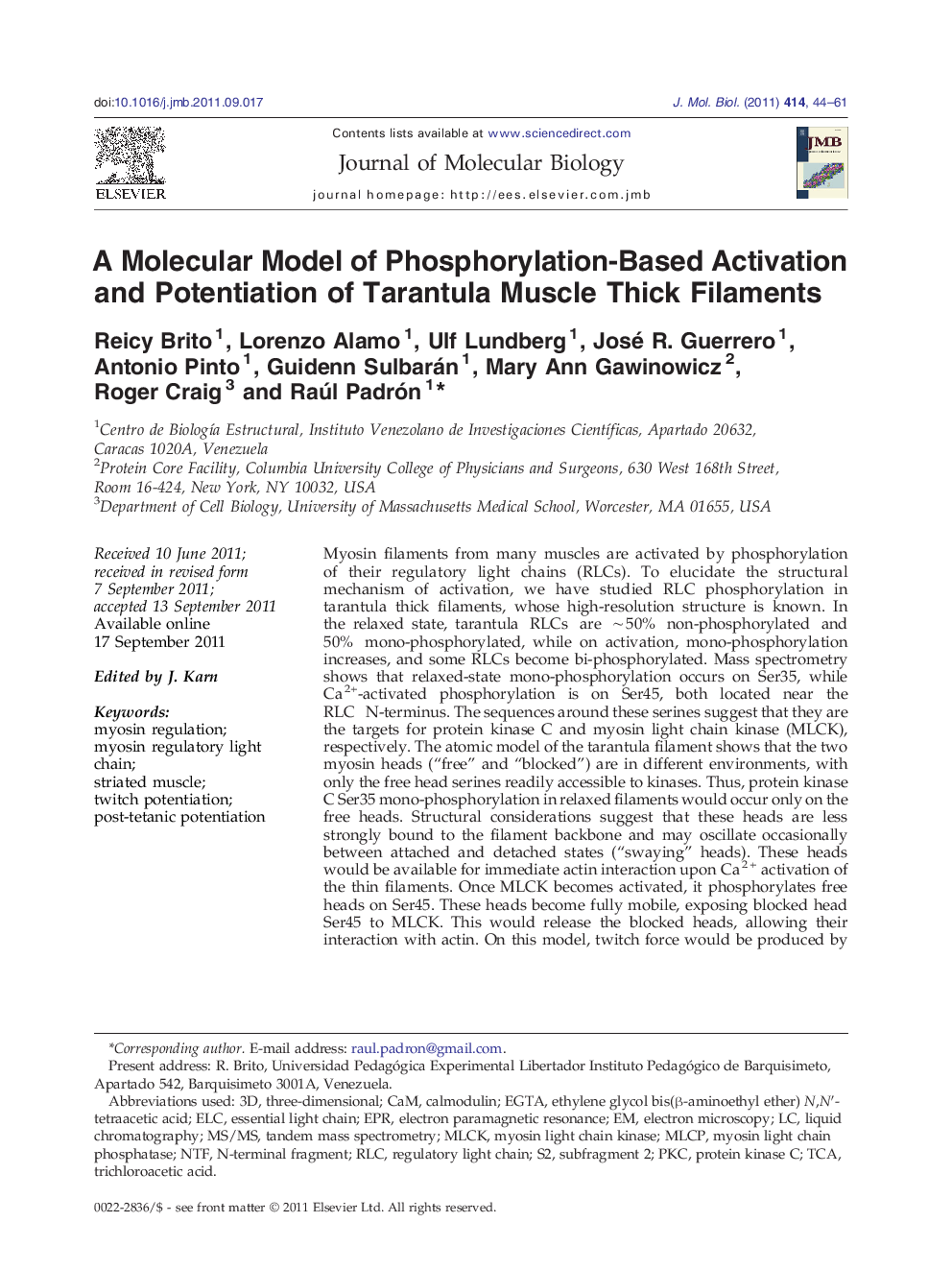| کد مقاله | کد نشریه | سال انتشار | مقاله انگلیسی | نسخه تمام متن |
|---|---|---|---|---|
| 2184719 | 1095922 | 2011 | 18 صفحه PDF | دانلود رایگان |

Myosin filaments from many muscles are activated by phosphorylation of their regulatory light chains (RLCs). To elucidate the structural mechanism of activation, we have studied RLC phosphorylation in tarantula thick filaments, whose high-resolution structure is known. In the relaxed state, tarantula RLCs are ∼ 50% non-phosphorylated and 50% mono-phosphorylated, while on activation, mono-phosphorylation increases, and some RLCs become bi-phosphorylated. Mass spectrometry shows that relaxed-state mono-phosphorylation occurs on Ser35, while Ca2+-activated phosphorylation is on Ser45, both located near the RLC N-terminus. The sequences around these serines suggest that they are the targets for protein kinase C and myosin light chain kinase (MLCK), respectively. The atomic model of the tarantula filament shows that the two myosin heads (“free” and “blocked”) are in different environments, with only the free head serines readily accessible to kinases. Thus, protein kinase C Ser35 mono-phosphorylation in relaxed filaments would occur only on the free heads. Structural considerations suggest that these heads are less strongly bound to the filament backbone and may oscillate occasionally between attached and detached states (“swaying” heads). These heads would be available for immediate actin interaction upon Ca2+ activation of the thin filaments. Once MLCK becomes activated, it phosphorylates free heads on Ser45. These heads become fully mobile, exposing blocked head Ser45 to MLCK. This would release the blocked heads, allowing their interaction with actin. On this model, twitch force would be produced by rapid interaction of swaying free heads with activated thin filaments, while prolonged exposure to Ca2+ on tetanus would recruit new MLCK-activated heads, resulting in force potentiation.
Graphical AbstractFigure optionsDownload high-quality image (111 K)Download as PowerPoint slideHighlights
► The tarantula muscle thick filament has four helices of myosin interacting-heads motifs.
► In the relaxed state, the myosin interacting-heads motifs rest down on the backbone surface.
► The catalytic domain of MLCK can only access myosin-RLC-exposed serines.
► On activation, RLC phosphorylation causes release of heads from the filament backbone.
► This enables interaction with actin to produce contraction.
Journal: Journal of Molecular Biology - Volume 414, Issue 1, 18 November 2011, Pages 44–61